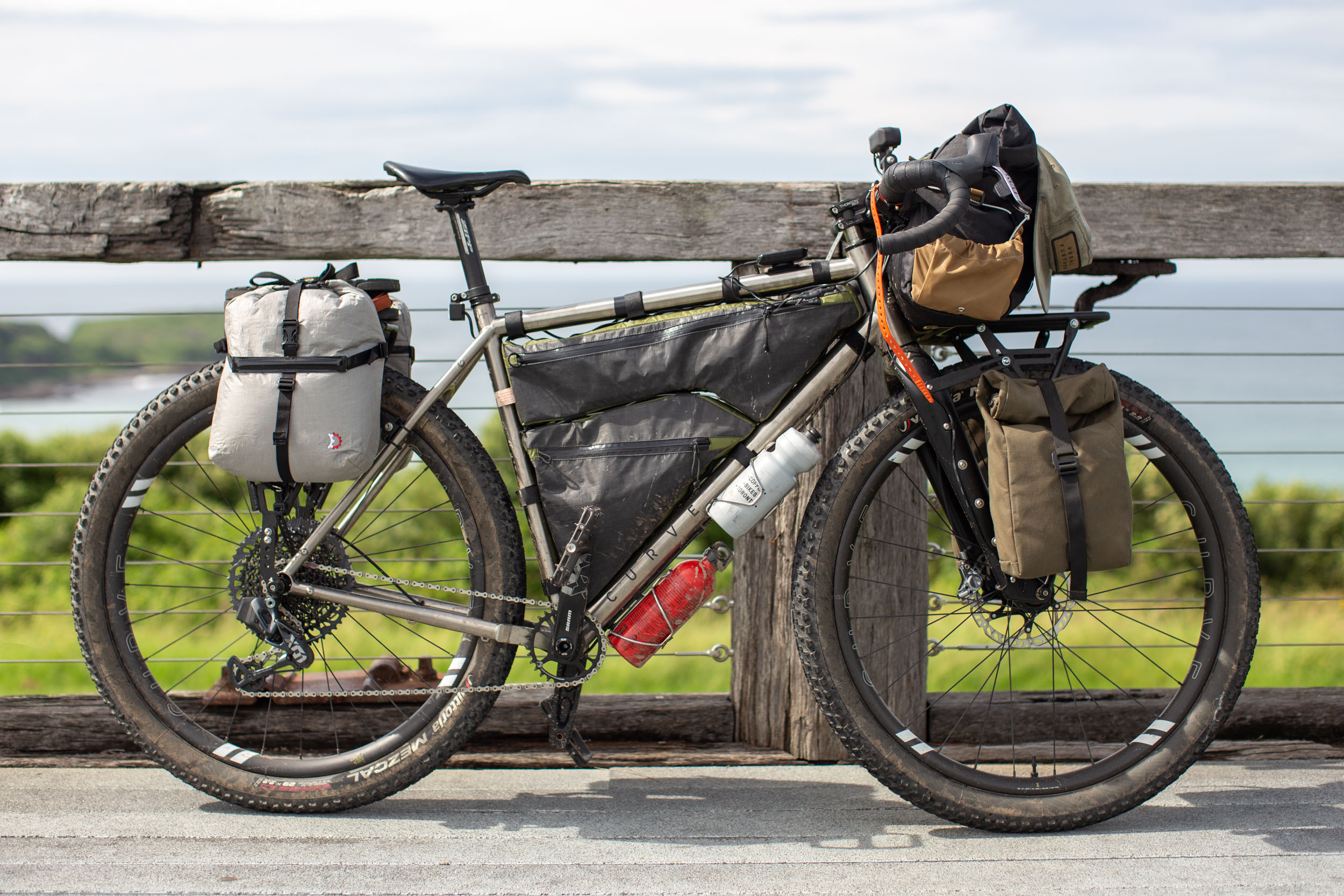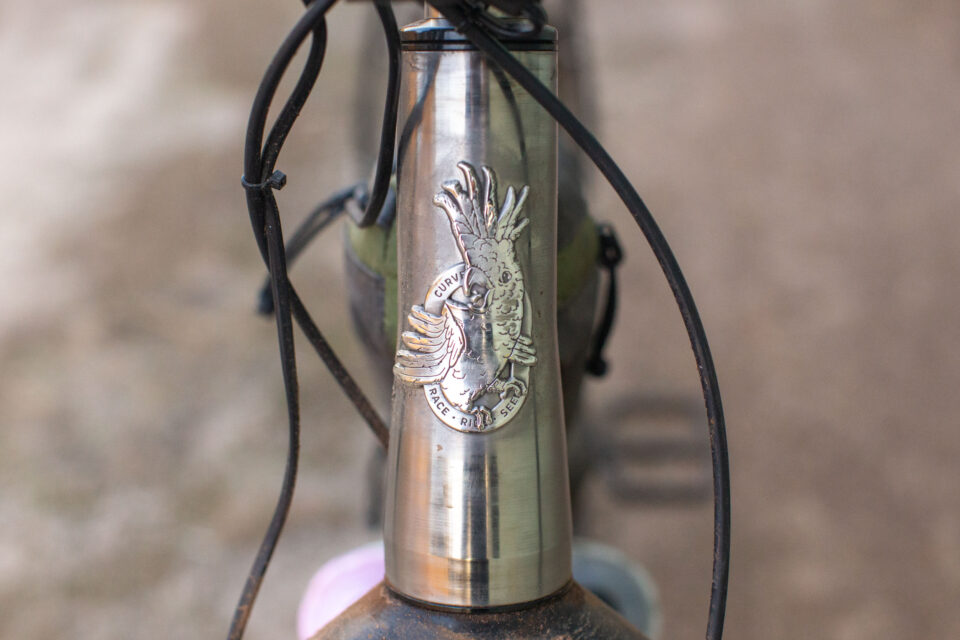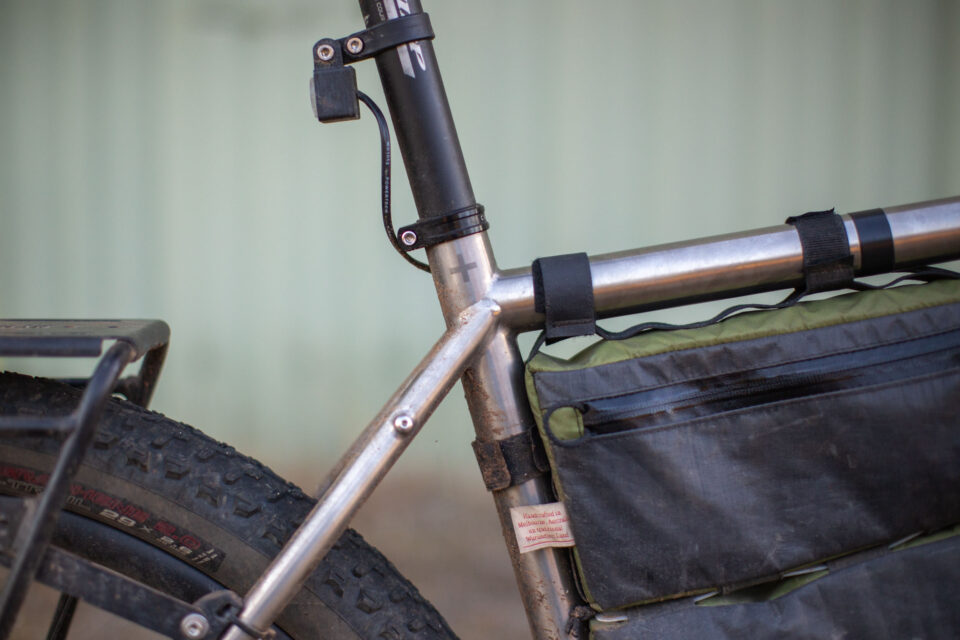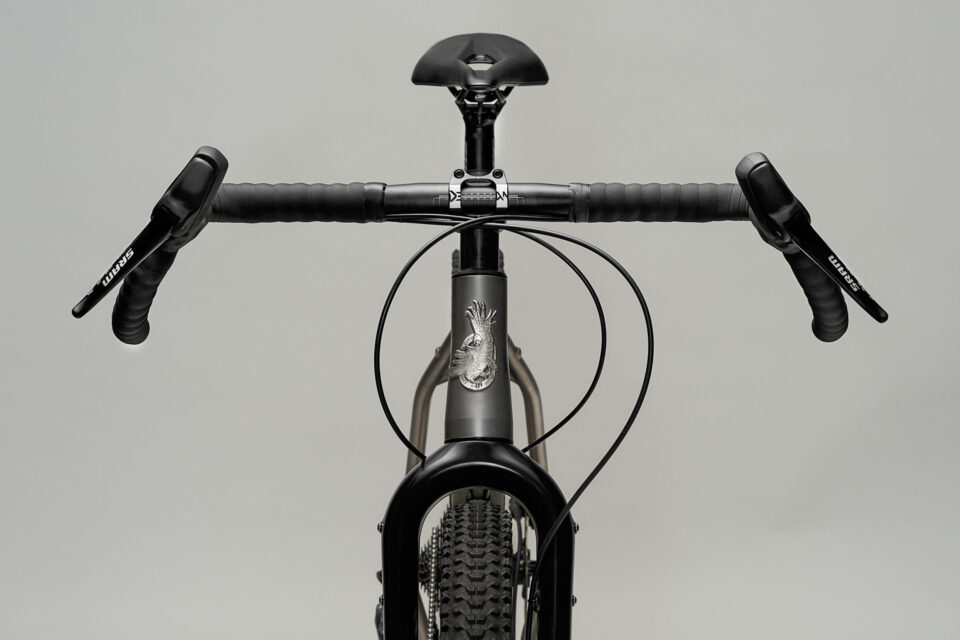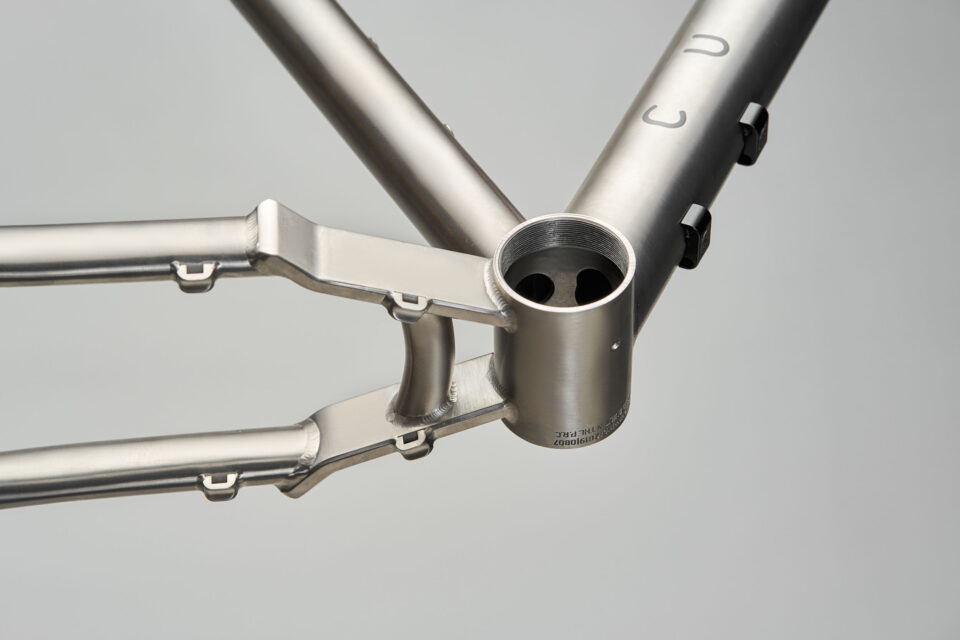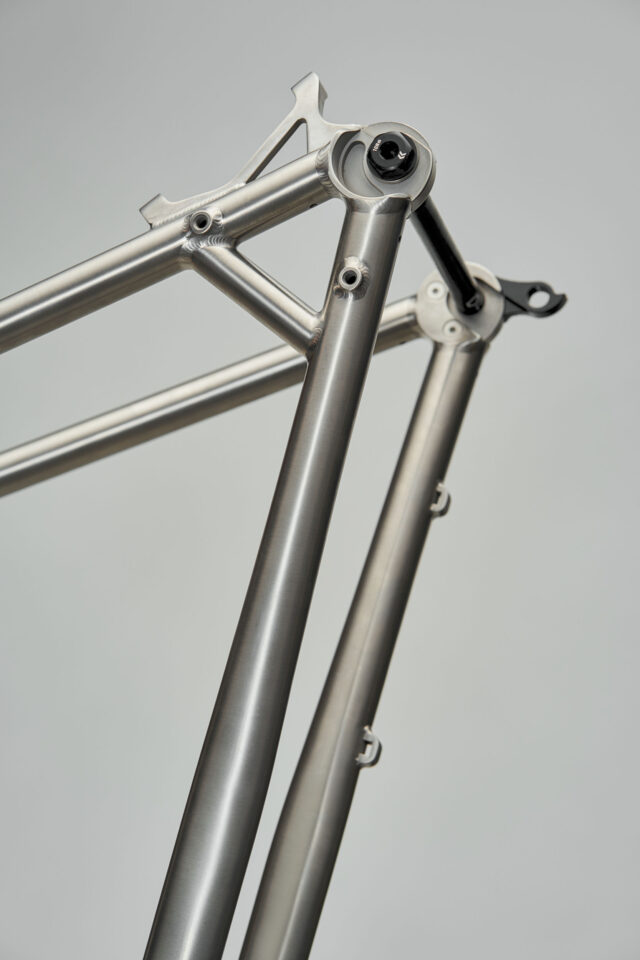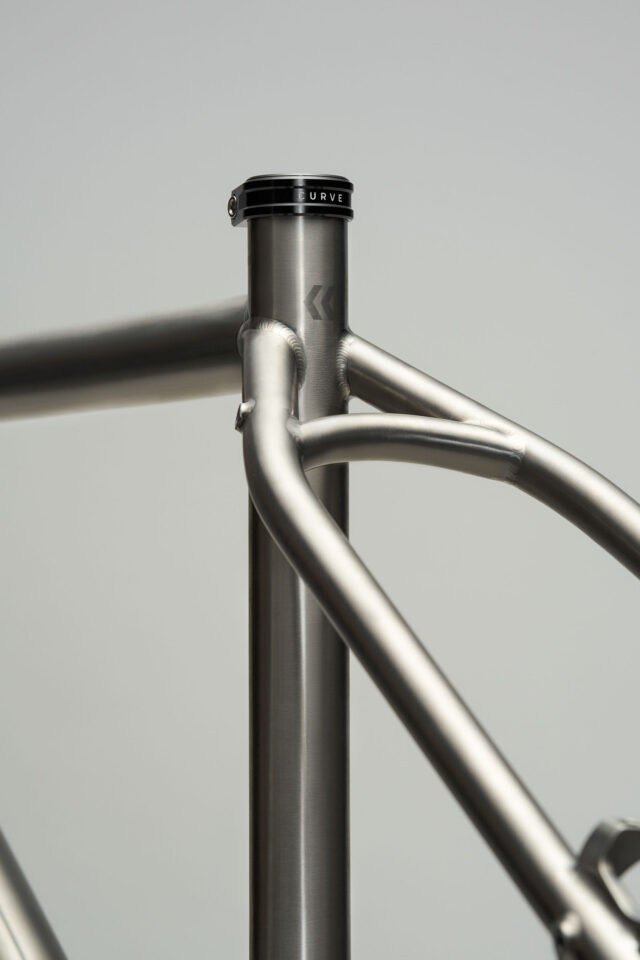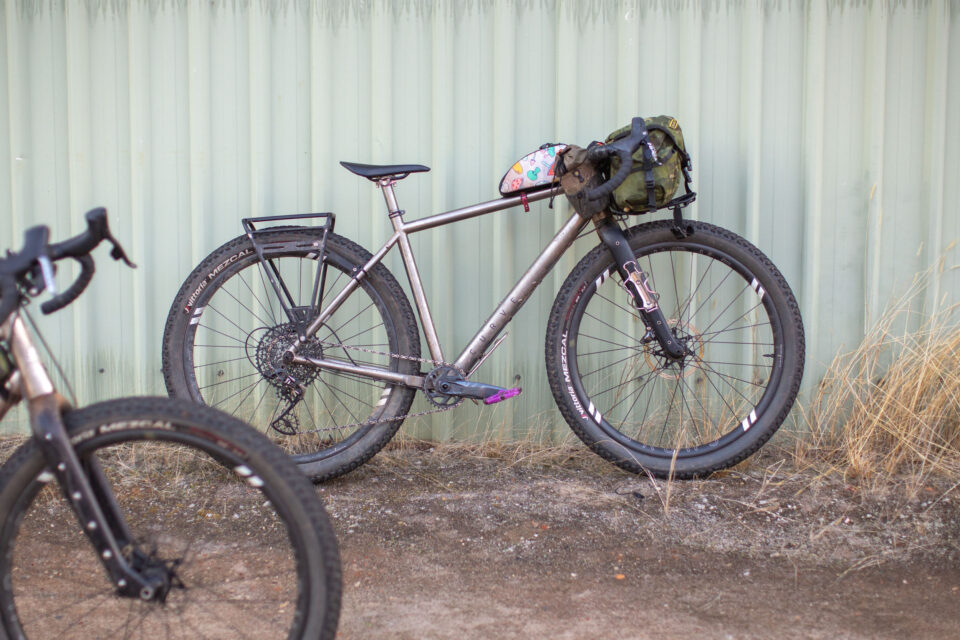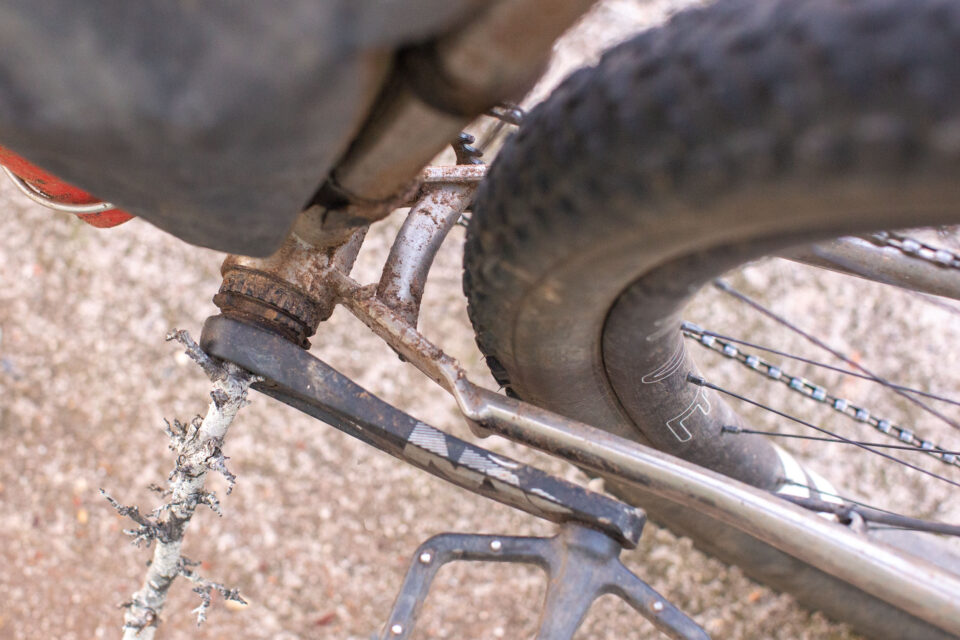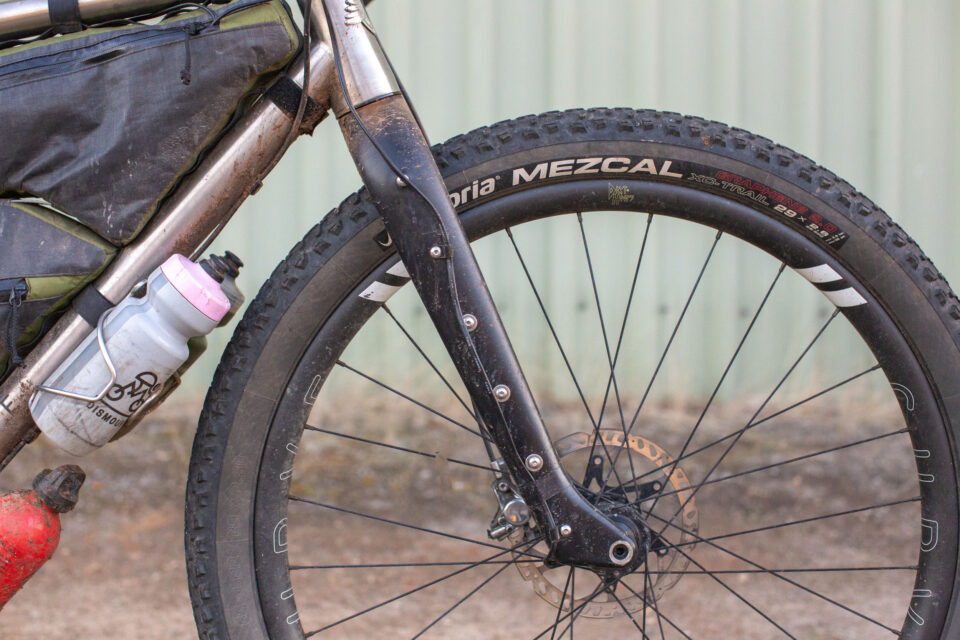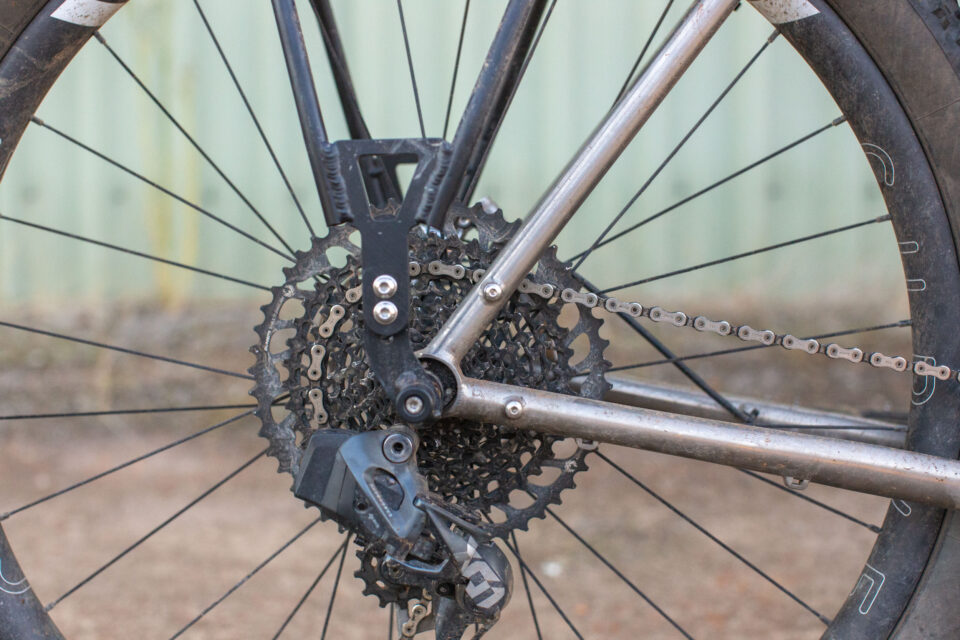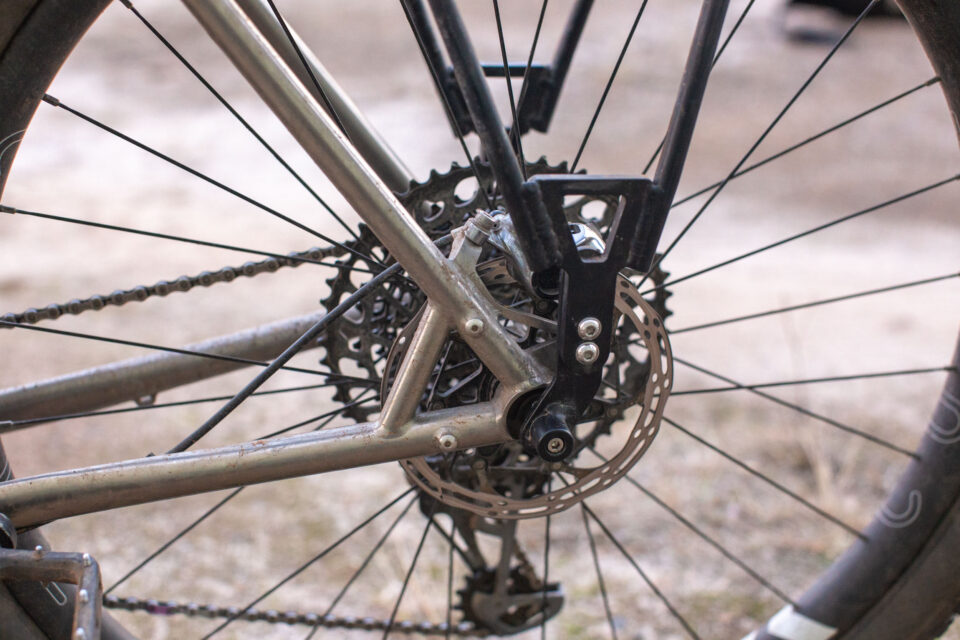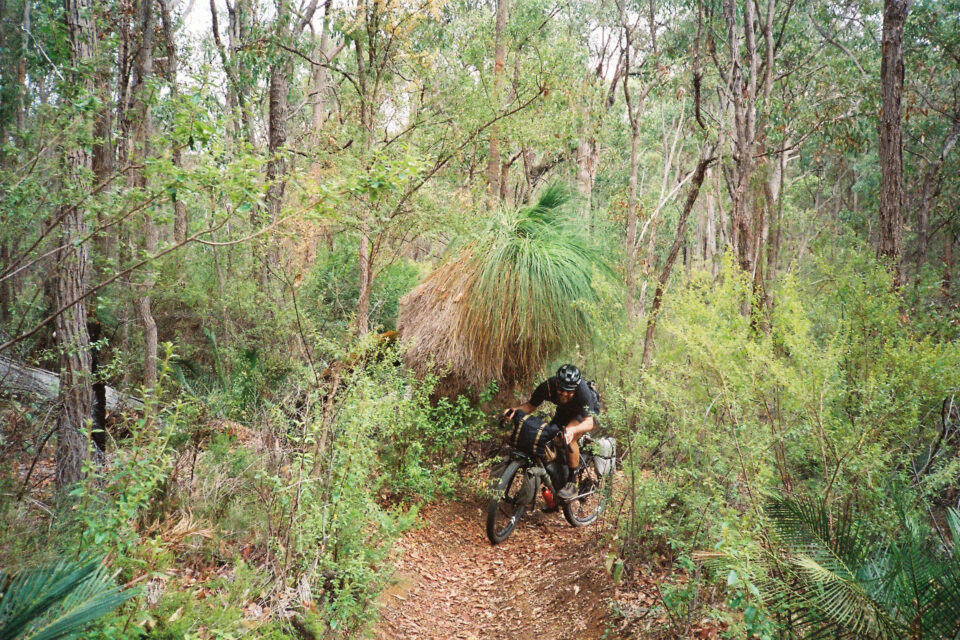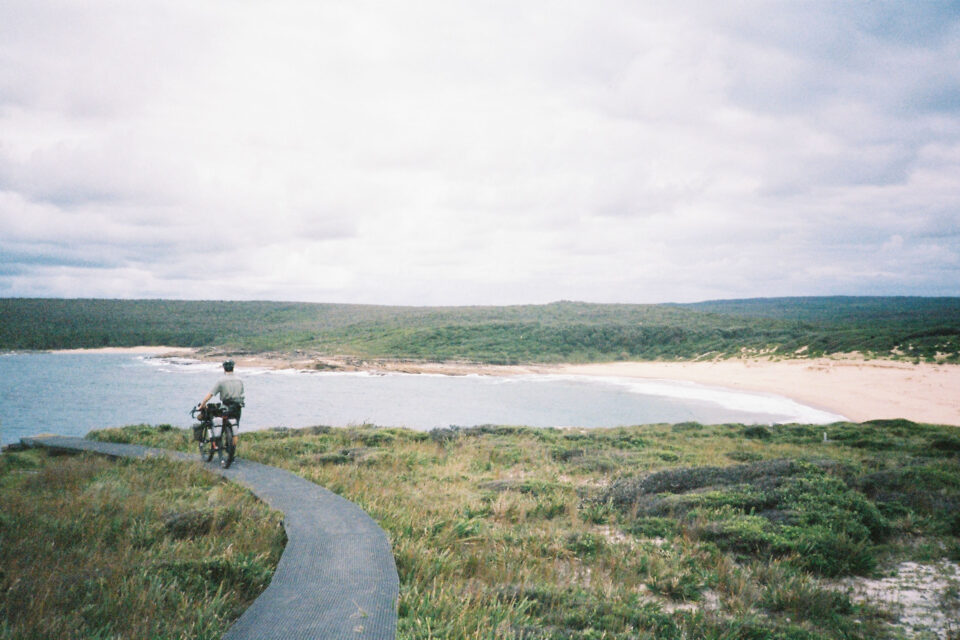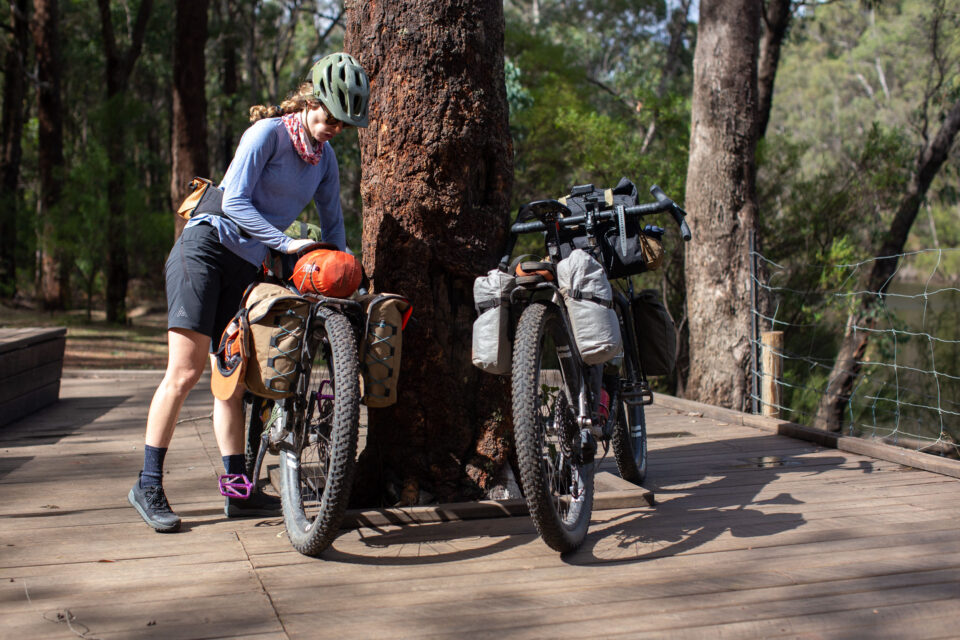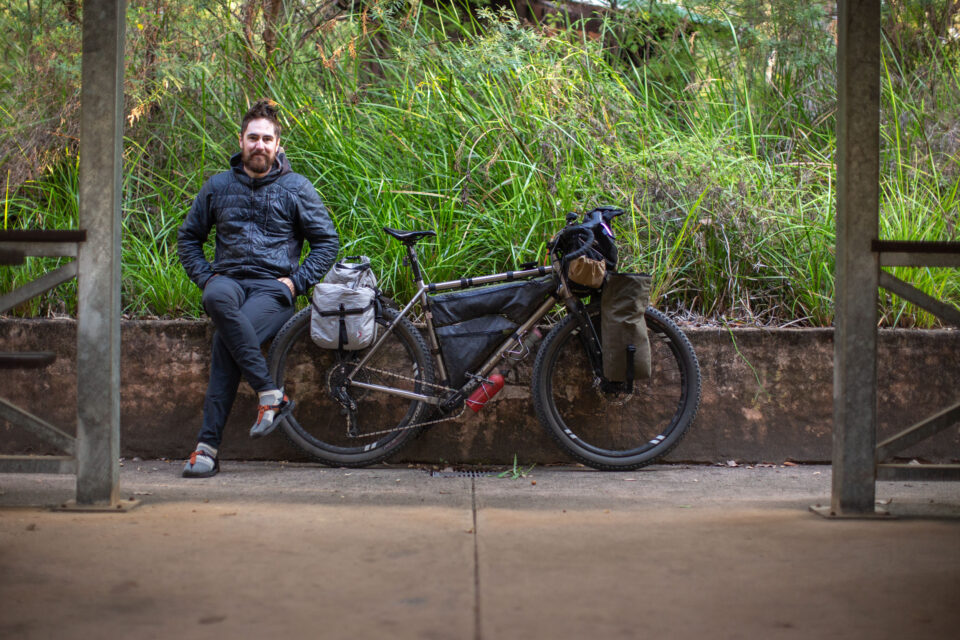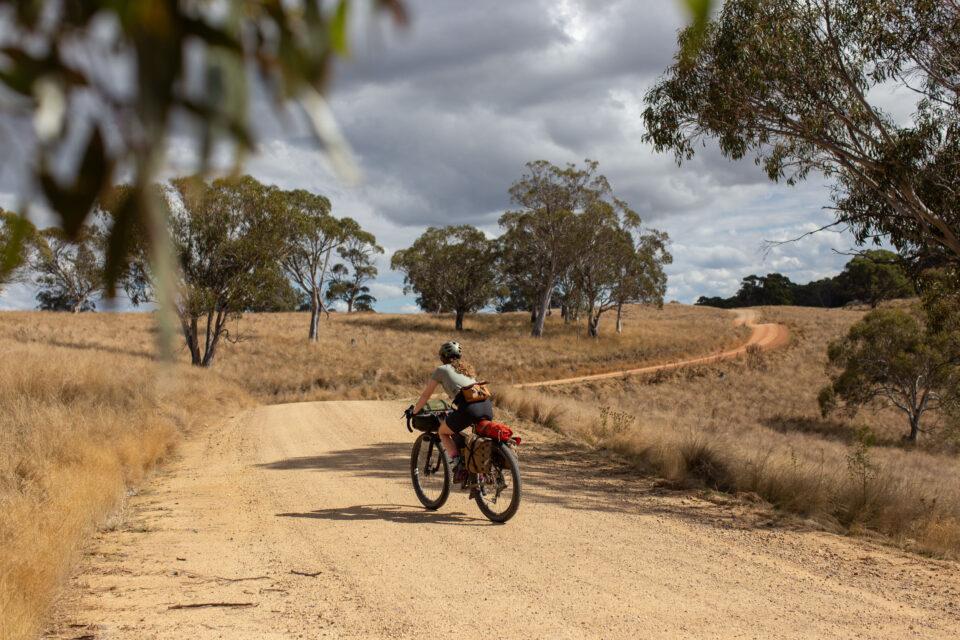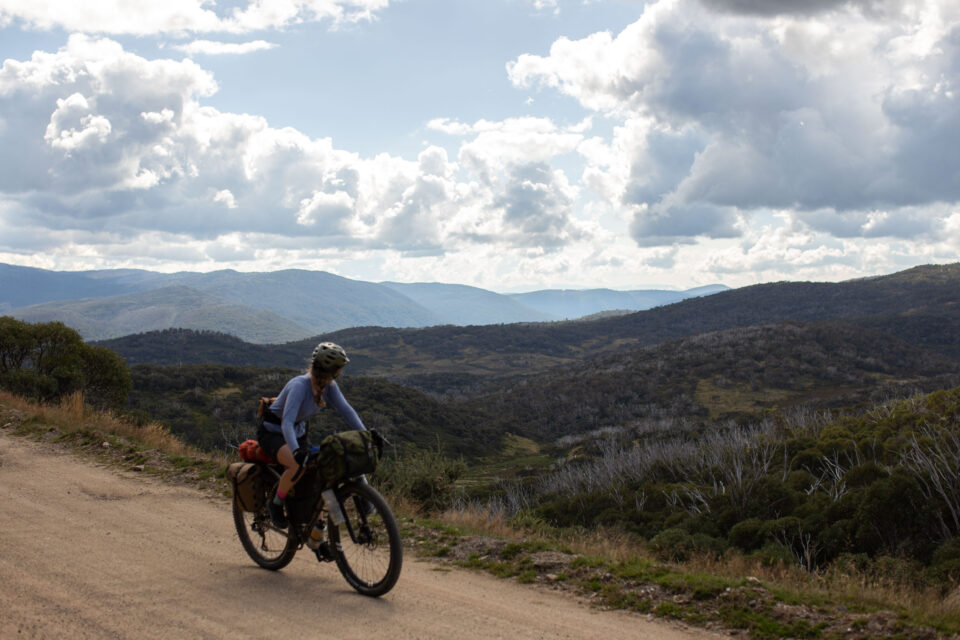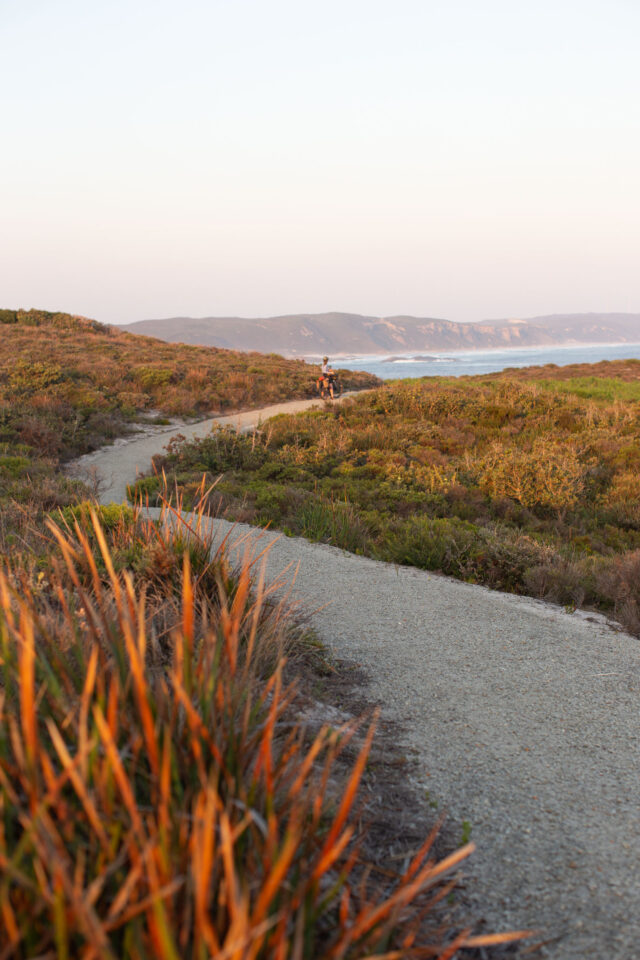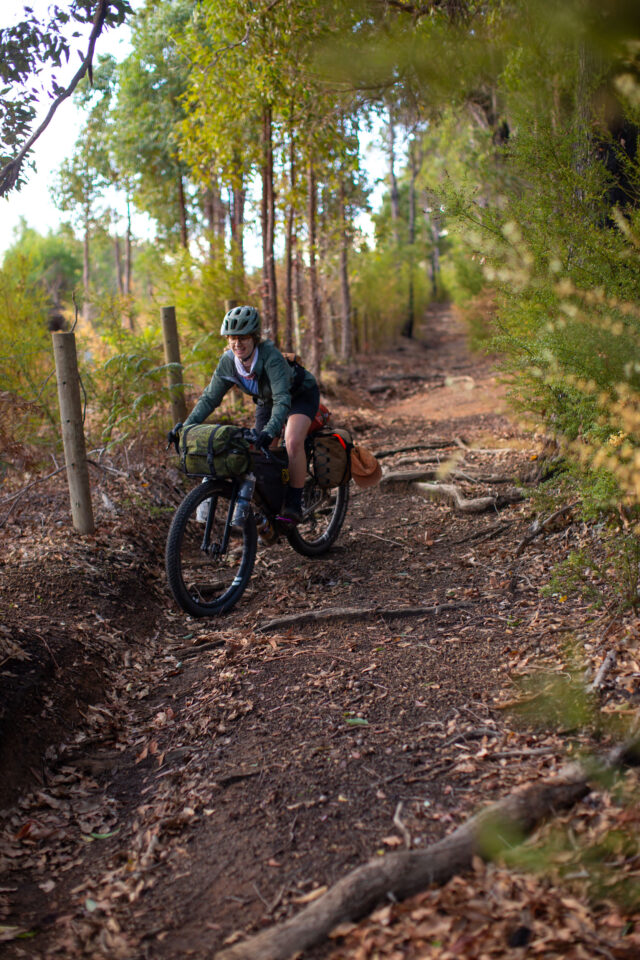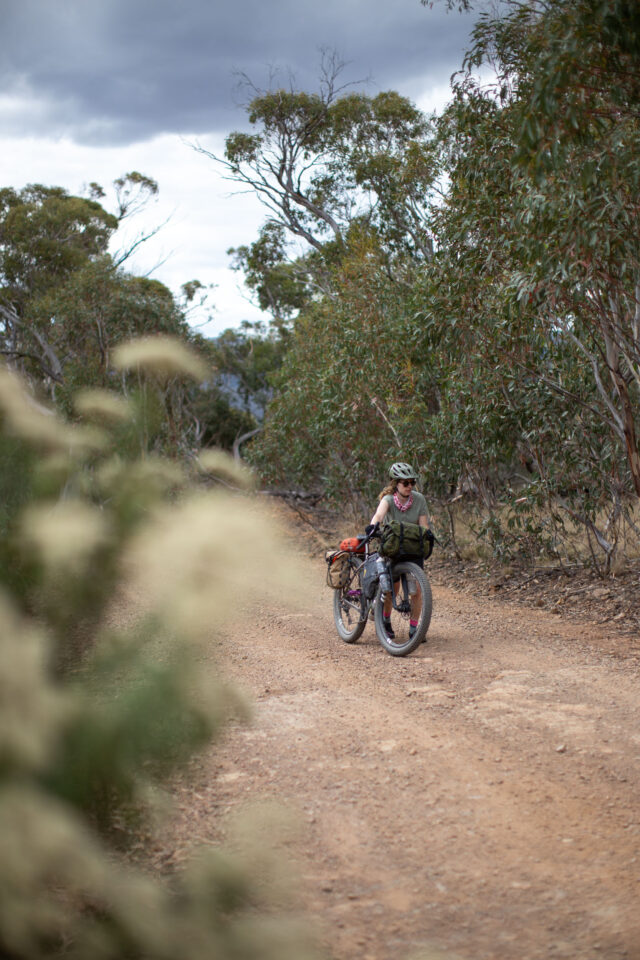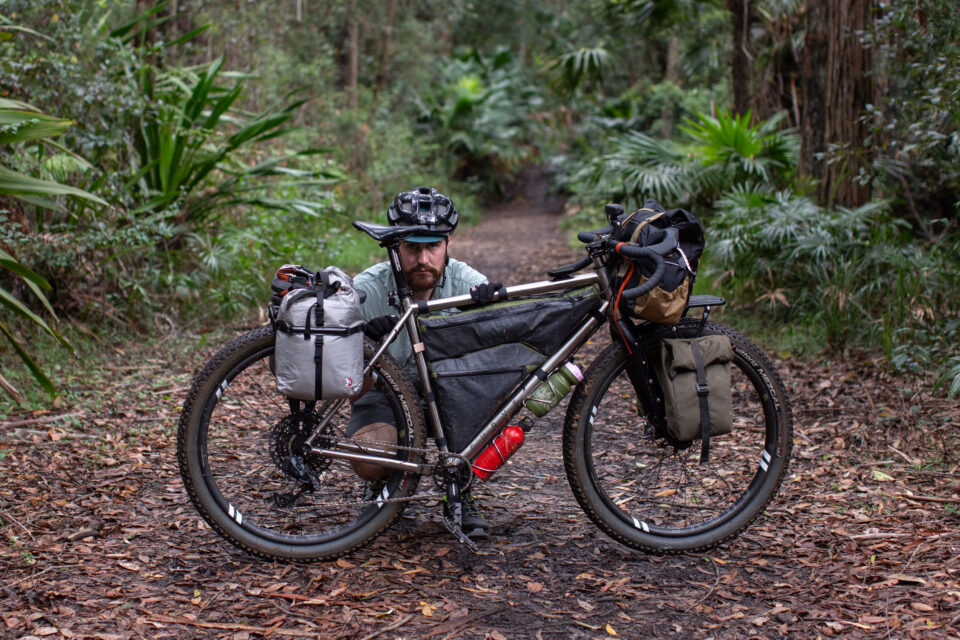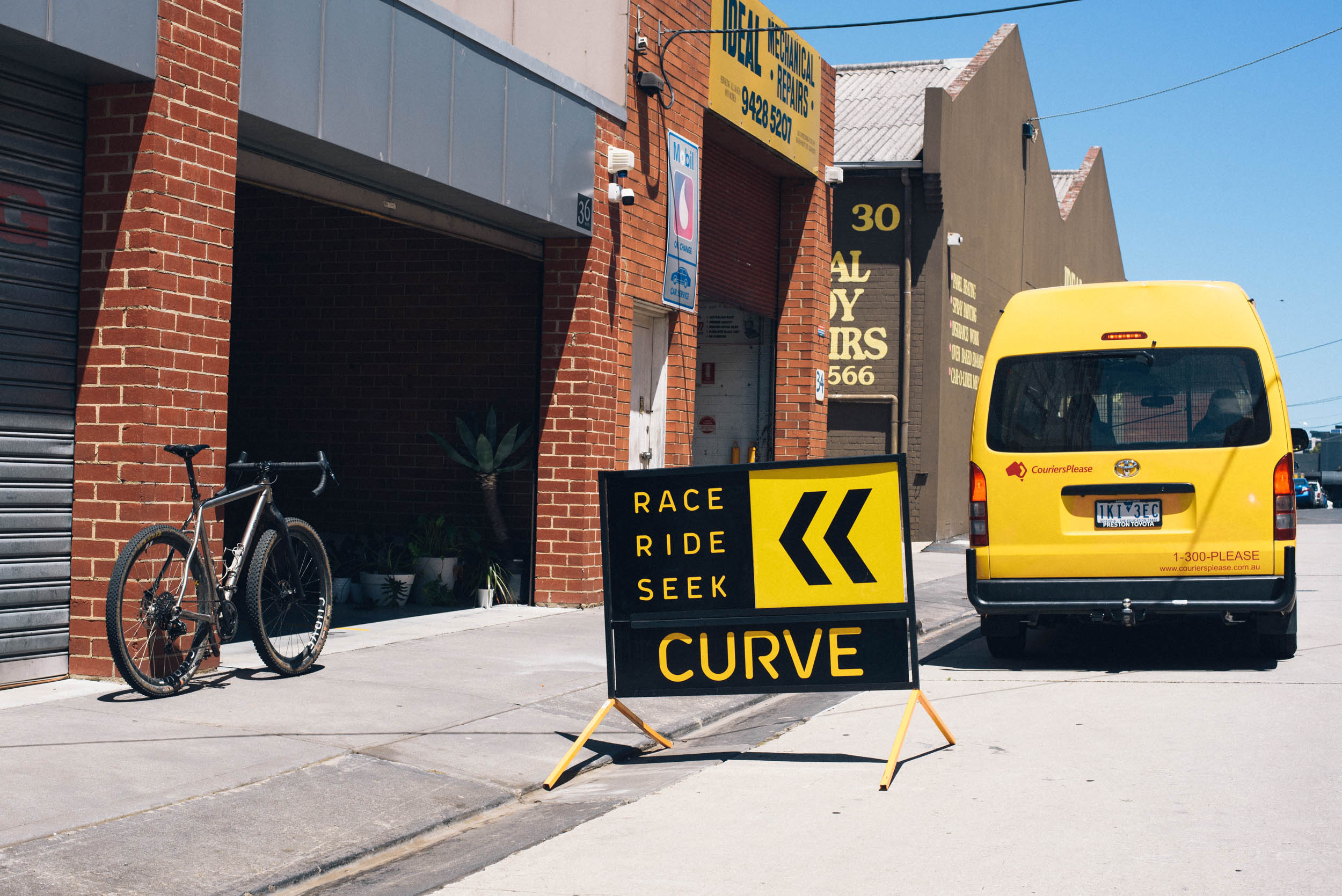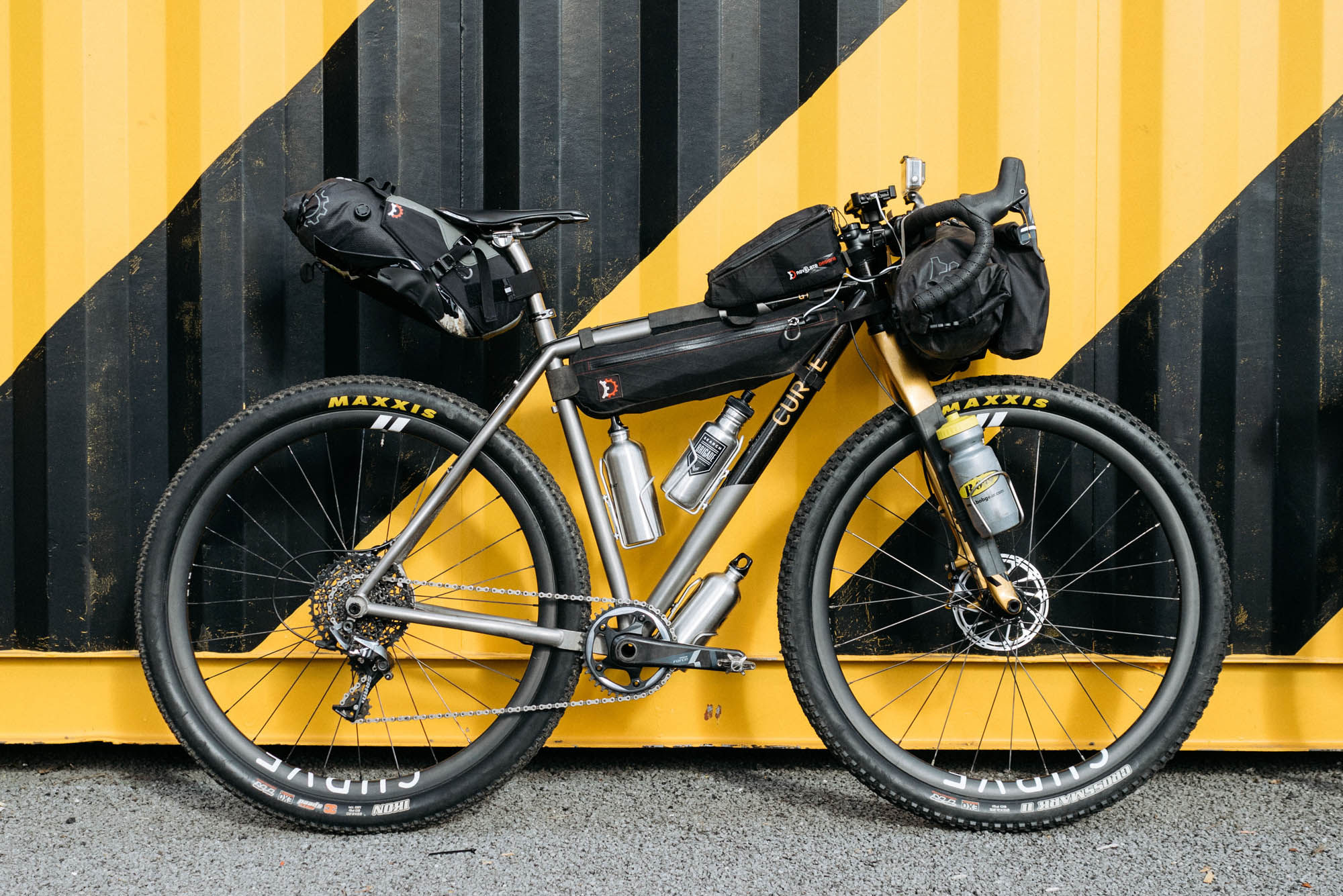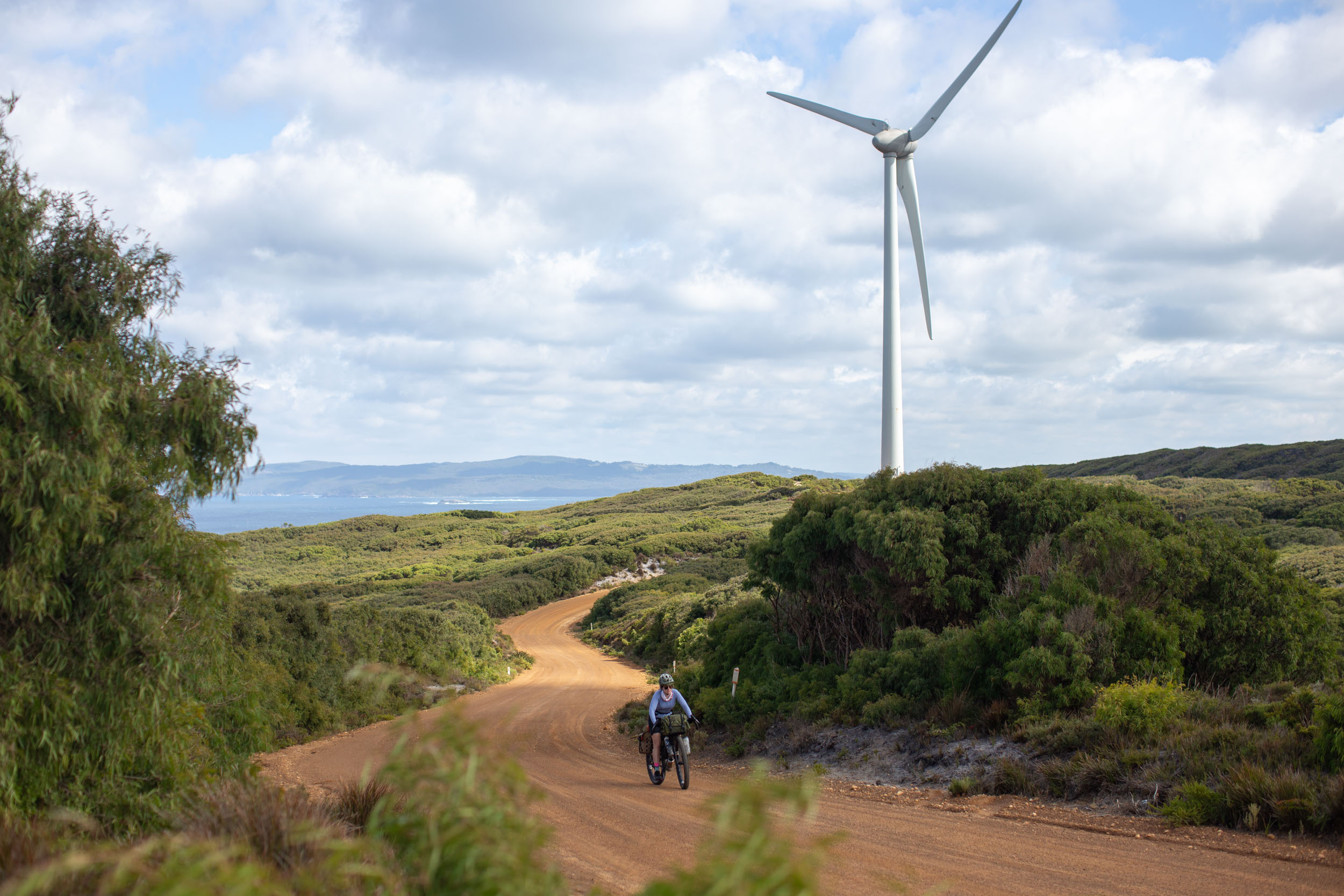Curve GMX+ Titanium Review: Performance Overlanding
Inspired by Australia’s long-rooted history with overlanding, the Curve GMX+ Titanium is designed to handle big rides through challenging terrain, move swiftly in a variety of conditions, and easily carry everything needed along the way. Miles and Emily spent around two months living aboard the GMX+ during their recent trip to Australia and report back for this review. Find heaps of photos and their findings after 2,000 kilometers of pedaling here…
PUBLISHED Jul 17, 2023
I’ve never been a truck guy. Actually, I’ve never really been a vehicle guy, for that matter. I see automobiles as a utilitarian tool and as a way to get my bike and me to new places. Here on the west coast of British Columbia, if you don’t own a brand new Tacoma with a North Shore bike rack, you’re pretty much an outcast. Australia has a slightly different take on trucks. Overlanding embedded deep into their culture. Instead of the newest Tacoma, many Australians use old Land Cruisers to traverse the fire roads that crisscross the country. Those same vehicles are often people’s daily drivers as well. They’re equipped with canvas cargo liners, expandable roof-top campers, and packed full of extra fuel, water, and other essentials. Even after spending my fair share of time mesmerized by these utilitarian overlanding rigs, I still wouldn’t call myself a truck guy. However, Australian overlanding bikes are equally as intriguing.

Melbourne’s Curve Cycling get this. They’ve placed overlanding at the heart of everything they’ve done since opening their doors in 2012. Whether that means taking the long way home, riding deep into the Outback, or all-out racing, Curve has a bike for that. They are most known for gravel bikes, but they’ve expanded their lineup over the years to include road bikes, monster-cross bikes, and most recently, their first flat-bar mountain bike. Their motto, “Race, Ride, Seek,” paints a pretty clear picture of what they know best, and they’ve been leaning into this concept for a while now.
The Curve GMX+ was released in 2020 with 29+ tire clearance, mounts for seven bottle cages, and claims of being the ultimate titanium bikepacking bike. It was described as an overlanding bike, not perfect for any particular terrain but a perfect all-rounder at the same time. Originally designed for Australia’s Race to the Rock event, the GMX+ is based on their GMX platform but with geometry that’s better suited to riding off-road for long periods of time, more tire clearance, boost hub spacing, and their new GMX+ carbon fork. It just happened to be the perfect platform for their super-wide Walmer bar, which was released a few months ahead of the GMX+.
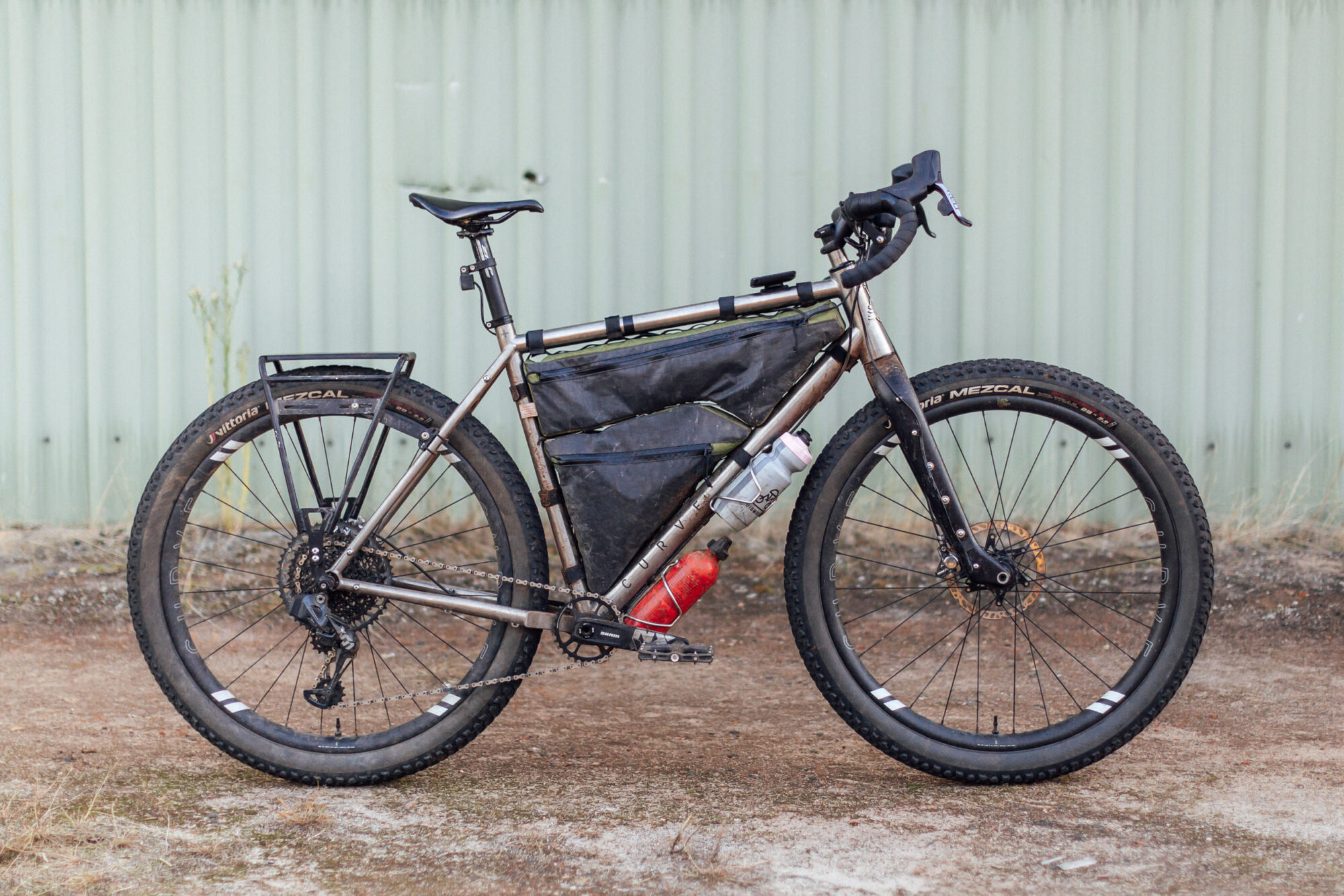
Since the titanium version was released, Curve has added a more affordable 4130 Chromoly steel option to the mix. Both the steel and titanium GMX+ are packed with features that lend themselves well to bikepacking. There are pairs of mounting points on the rear chain and seat stays that each hold a bottle cage, and offset mounts on the downtube that allow the use of bottles on either side of the downtube while using a full-sized frame bag. It has standard bottle mounts, top tube mounts, and front and rear rack mounts. Curve equipped it with the totally redesigned Seek 430 FM carbon fork which has quad-pack mounts for even more cargo.
A closer look at the GMX+ Ti frame shows their lovely cockatoo head tube badge—representing the loud, squawky, and quintessentially Australian bird that symbolizes their otherwise minimal brand. It also has bolt-on downtube cable guides, a threaded T47 bottom bracket, a replaceable derailleur hanger, braze-on cable guides on the rear end, and a chainstay yoke plate with a horizontal brace to keep things stiff and maximize tire clearance. Like all of Curve’s bikes, the GMX+ is is a step above off the shelf, and they specialize in fully custom builds specific to each customer’s needs.
- Highlights (extra-medium)
- Frame: 3Al – 2.5V Aerospace Grade 9 titanium
- Angles (XM): 69° Headtube, 74.75° Seattube
- Stack/Reach: 631mm/453mm
- BB Drop/Chainstay: 88mm/460mm
- Bottom Bracket: Threaded T47 BB (73 mm)
- Hub specs: 15x110mm / 12x148mm, TA
- Seatpost: 31.6mm
- Max tire size: 29 x 3.0″
- Price: $4,478 AUD / ~$3,100 USD (frame and fork)
Curve set Emily and me up with two GMX+ Ti builds for our recent six-week Australia bikepacking tour. Both were equipped with their super stable Walmer bars, wide-range drivetrains for clearing long and steep climbs, their Dirt Hoop wheels, and the previous version of their Seek carbon fork. To carry all of our belongings—including cold and wet weather gear, as well as our work laptops—we set both bikes up with Old Man Mountain Divide rear racks. I used an Elkhorn rack up front, and Emily supported her Bags by Bird Piccolo with our beloved Jack the Rack bag support. The good folks at Omafiets in Sydney did a thorough tune-up of the bikes before our arrival, let us take over a work stand to set up the bikes, and a couple of hours after laying our eyes on the bikes for the first time, we set off on the first leg of our trip: Dan Hunt’s Sydney to Summit route.

Specs, Sizing, Geometry, and More…
The Curve GMX+ is built up around a 3Al – 2.5V Aerospace Grade 9 titanium frame and a carbon non-suspension-corrected fork. It’s a mix between a drop-bar mountain bike and a big-tired gravel bike, with clearance for 29 x 3.0” tires, boost hub spacing, and a whopping eight frame sizes with interesting angles that make a unique bike.
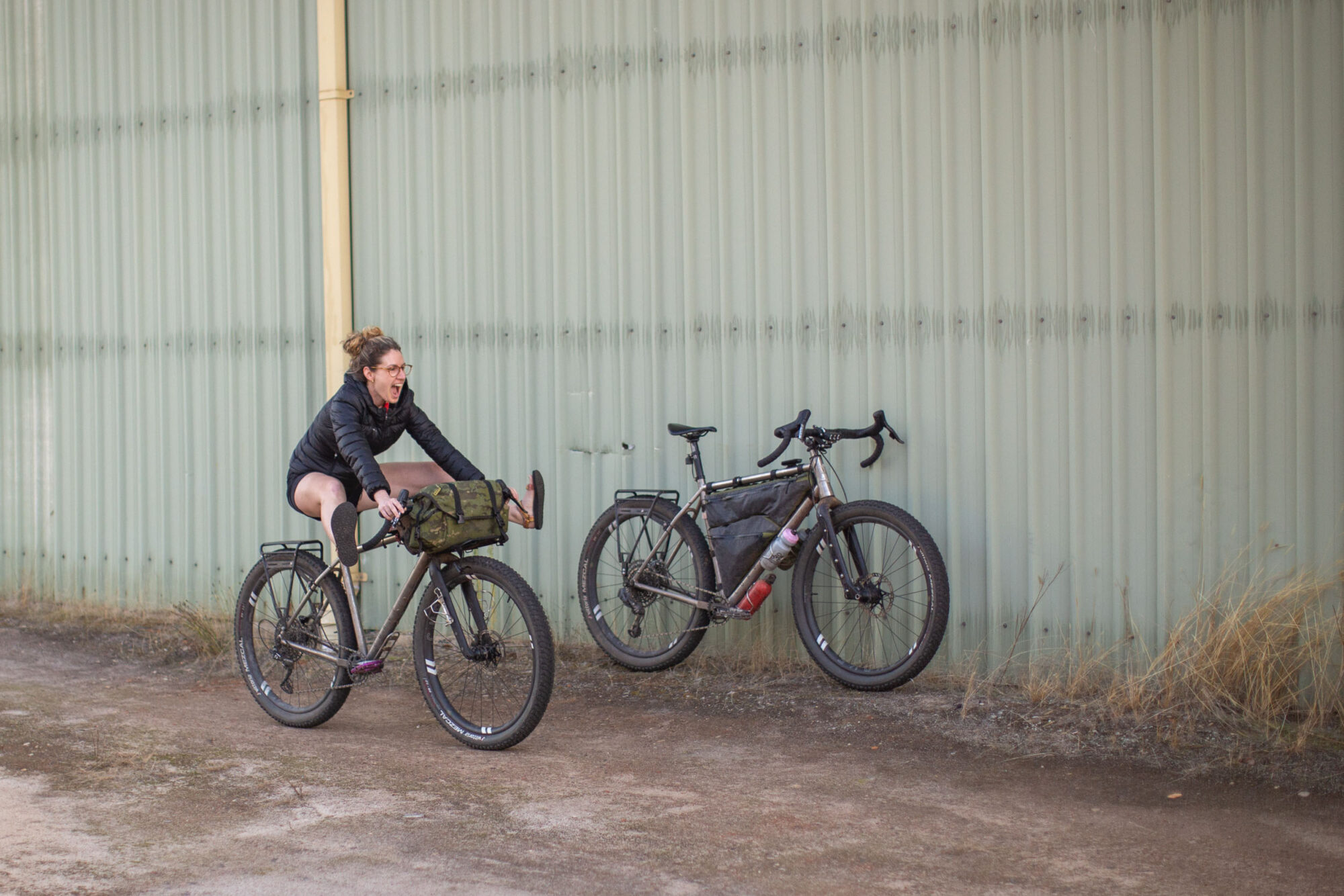
According to Curve, the GMX+ platform was designed and refined over five years and thousands of kilometers riding in ultra-endurance races and touring Australia’s Outback. Its unique geometry starts with an extra-long wheelbase, making it predictable on rough terrain and stable while loaded. It has an equally long reach (horizontal distance from the center of the bottom bracket to the top of the head tube) that’s longer than other bikes in this category, but Curve offsets this with a short stem, bar sweep, and steep seat tube angle that helps move the riding position forward, thereby reducing the effective reach.
Here’s a snapshot of some comparable bikes and key angles, including head tube angle (HTA), reach, stack, wheelbase (WB), and bottom bracket drop. Looking at all the numbers we can see the GMX+ stands out on its own. It’s perhaps most similar to the Surly Grappler, but has a wildly lower bottom bracket, and the longest reach out the bunch.
| Bike Model (size) | HTA | Reach | Stack | WB | BB Drop |
|---|---|---|---|---|---|
| Curve GMX+ (XM) | 69° | 453mm | 631mm | 1172mm | 88mm |
| Tumbleweed Stargazer (L) | 69° | 389mm | 653mm | 1119mm | 63.5mm |
| Salsa Fargo (L) | 69° | 385mm | 671mm | 1127mm | 70mm |
| Landyachtz AB-ST (L) | 70° | 440mm | 607mm | 1108mm | 72mm |
| Bearclaw Beaux Jaxon (58.5) | 70° | 402.3mm | 626.4mm | 1093.2mm | 80mm |
| Surly Grappler (L) | 69.5° | 444mm | 641mm | 1140mm | 50mm |
| Otso Fenrir (L) | 68° | 428mm | 642mm | 1170mm | 72mm |
However, unlike more upright bikes such as the Salsa Fargo or Tumbleweed Stargazer, the Curve GMX+ keeps the stack height low on purpose. Although this might not be ideal for folks looking for a traditional upright long-distance touring perch, I commend Curve for sticking with what they know, a stance that’s partially driven by performance or, at the very least, riding fast. Since it’s designed for short stems and wide drop bars, it also plays well with flat bars, including their Remlaw Bars, or even riser bars for riders looking for a slightly more relaxed position.
It’s worth mentioning that I added a riser stem to bring the front end up as I’ve been dealing with some lower back pain, but I think in normal conditions, I’d be happy with the stack and reach during long rides. If you’re looking for something slightly more relaxed or prefer flat bars, that’s an option as well. Some other notable features are its high standover height which translates to a massive main triangle that maximizes the frame bag space and cargo-carrying capacity. Plus, due to its length and boost hub spacing, there’s room for 29 x 3.0” tires and no toe overlap to speak of.
With eight frame sizes to choose from and some unusual numbers, picking the right GMX+ might feel like a daunting task. At 6’1″ with a 33” inseam, I’m almost always on a size L/XL or 58cm frame. I ended up on the extra-medium (XM) GMX+, which, for comparison’s sake, has a 50mm longer reach than the size 58.5 Bearclaw Beaux Jaxon and a very comparable reach and stack to the extra-large Landyachtz AB-ST I reviewed last year. Unlike the AB-ST, the GMX+ has a far taller standover height, slacker head tube angle, and a longer overall wheelbase. Although these specs are consistent through the entire size range, shorter riders will appreciate a more sloping top tube on the smaller sizes for more realistic standover numbers. At 5’8”, Emily ended up on a size small and noticed the taller top tube but was able to clear it despite the standover being over 70mm taller than her 49cm All-City Super Professional.
Emily and I both agree that we found the handling to be slow and predictable. Aside from the long wheelbase, the GMX+ has a very low bottom bracket drop (88mm on the extra-medium!), which contributes to its stability. Because of this, the bike felt confident and sure-footed on fast gravel descents, slow climbs, and on singletrack, although you have to mind your pedal positioning when there are roots or rocks afoot.
Performance Overlanding
The GMX+ isn’t just a gravel bike with big tires like many other bikes out there, and it’s not really a drop-bar mountain bike either. It’s something different. It has features, angles, and specs that make it a super capable long-distance bikepacking bike while also being able to handle rougher and more technical terrain than other drop bar bikes I’ve ridden. The fact that it plays nicely with drop bars and flat bars, has clearance for plus-sized tires, and isn’t missing a single mounting point will check a lot of boxes for folks looking for a versatile long-ride buddy.
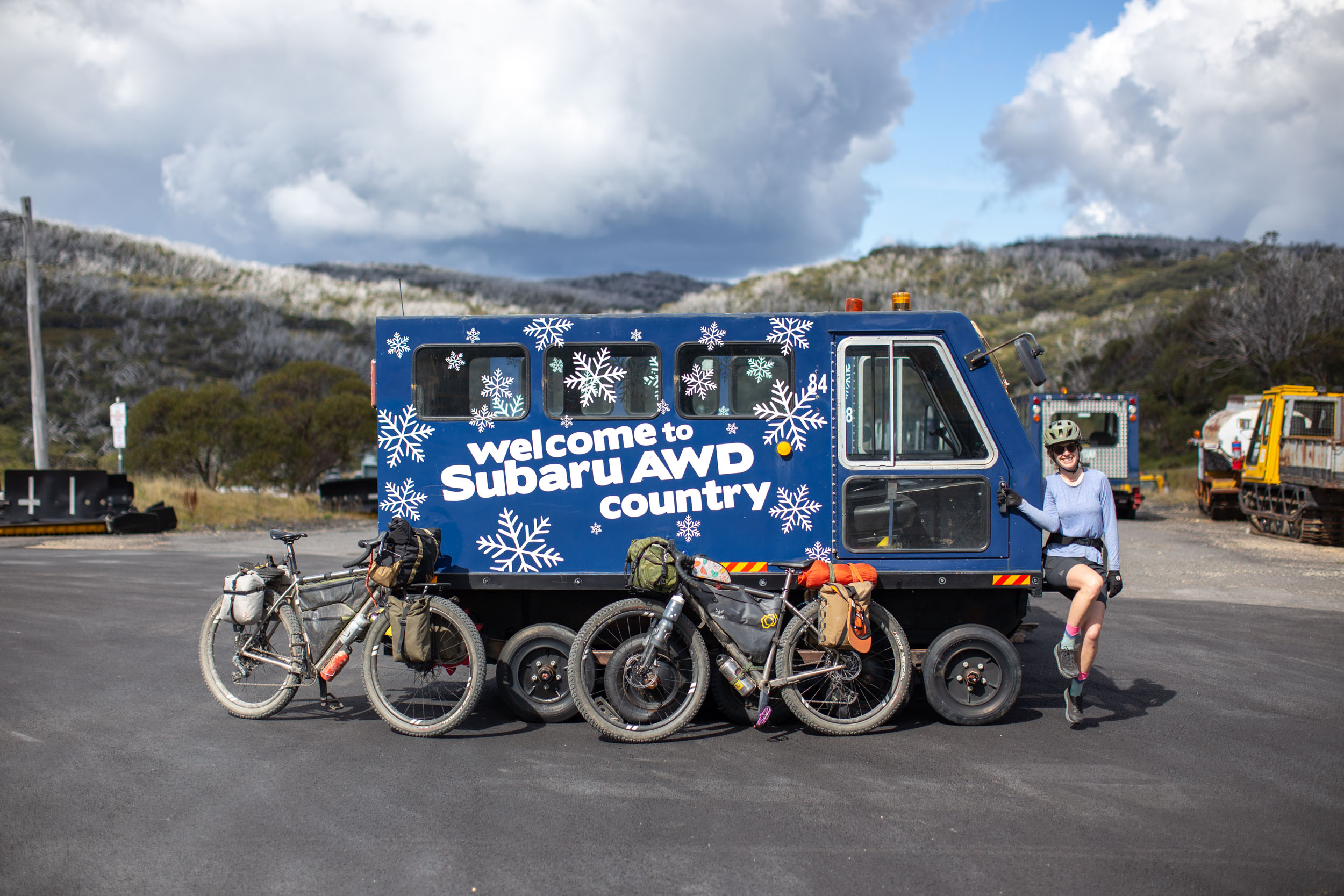
Emily and I set off on our 2,000-kilometer tour of Australia with two main routes in mind. First, Dan Hunt’s new Sydney to Summit route from Sydney to Mt. Kosciuszko, followed by the iconic Munda Biddi Trail in Western Australia. In both cases, we weren’t quite sure what types of terrain we would encounter. That’s where the GMX+ proved its depth. From pavement and smooth gravel to sandy doubletrack and a pinch of singletrack, the GMX+ was solid and rarely out of place. The longer geometry, beefy carbon fork, and wide drop handlebars felt natural and planted on a wide range of surfaces. It had an unmistakable “in the bike” feel that never felt like we were along for the ride or holding on for dear life. Wherever the GMX+ was pointed, it went confidently.
Our setups weren’t especially lightweight, either. I had my racks, small panniers, a massive Rambler Bags handlebar bag, and a gigantic frame bag. Emily was rocking a trusty Jack the Rack, Bags by Bird handlebar bag, and a set of Rambler Panniers. We loaded up for unknown conditions, and the bikes matched this approach. The GMX+ never really felt super playful loaded with so much gear, but they did feel incredibly competent pretty much anywhere we rode. Chunky gravel climbs and high-speed descents were no problem, partially because of the 29+ tires, super low bottom bracket, and long wheelbase. Looking at these numbers, it’s no surprise that the GMX+ feels most at home loaded with gear.
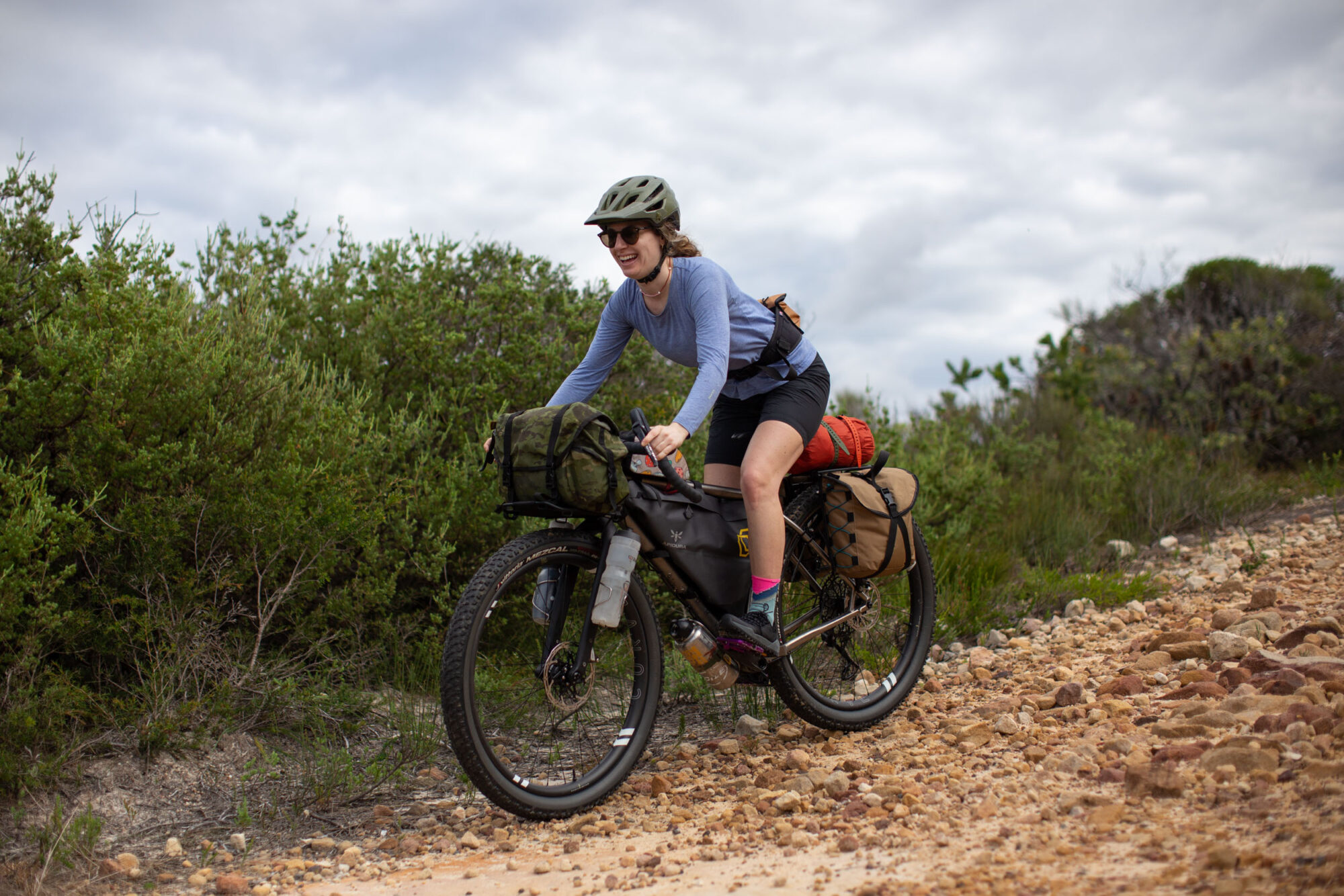
While riding, the bikes had a consistent feel at low and high speeds. The crisp titanium ride quality and low overall weight provide a great platform to build a bikepacking rig on, and it translated to a comfortable ride for both of us, which is saying something considering we jumped straight into a tour and didn’t even bring our own saddles.
Build Kits and Big Shoes
I ended up riding Curve’s Sales Director Ryan Flinn’s personal GMX+, and Emily ended up on Sarah Hammond’s. Besides having some big shoes to fill, both bikes were kitted out with a nice selection of components that differed from the complete build option listed on Curve’s website. With that said, Curve and their dealers specialize in custom builds, so most folks end up purchasing a frameset and wheels from Curve and building up a dream build around that.
My build was running Sram AXS for effortless shifting and good climbing gears. Curve hooked us up at the last minute with a Garbaruk derailleur upgrade kit for Emily’s SRAM Apex drivetrain in order to run a larger cassette. Both bikes had carbon Curve Dirt Hoop wheels, Walmer bars, the previous version of their carbon Seek fork, and we were both running 29 x 2.6” Vittoria Mezcals. Both bikes also had dynamo hubs up front, although only my bike had a kLite charging system and light hooked up. The USB charger proved to be incredibly useful for keeping my Garmin running day after day. We also replaced both bikes’ brake pads once and added another layer of bar tape to both handlebars. Otherwise, we had no issues during the entire trip.
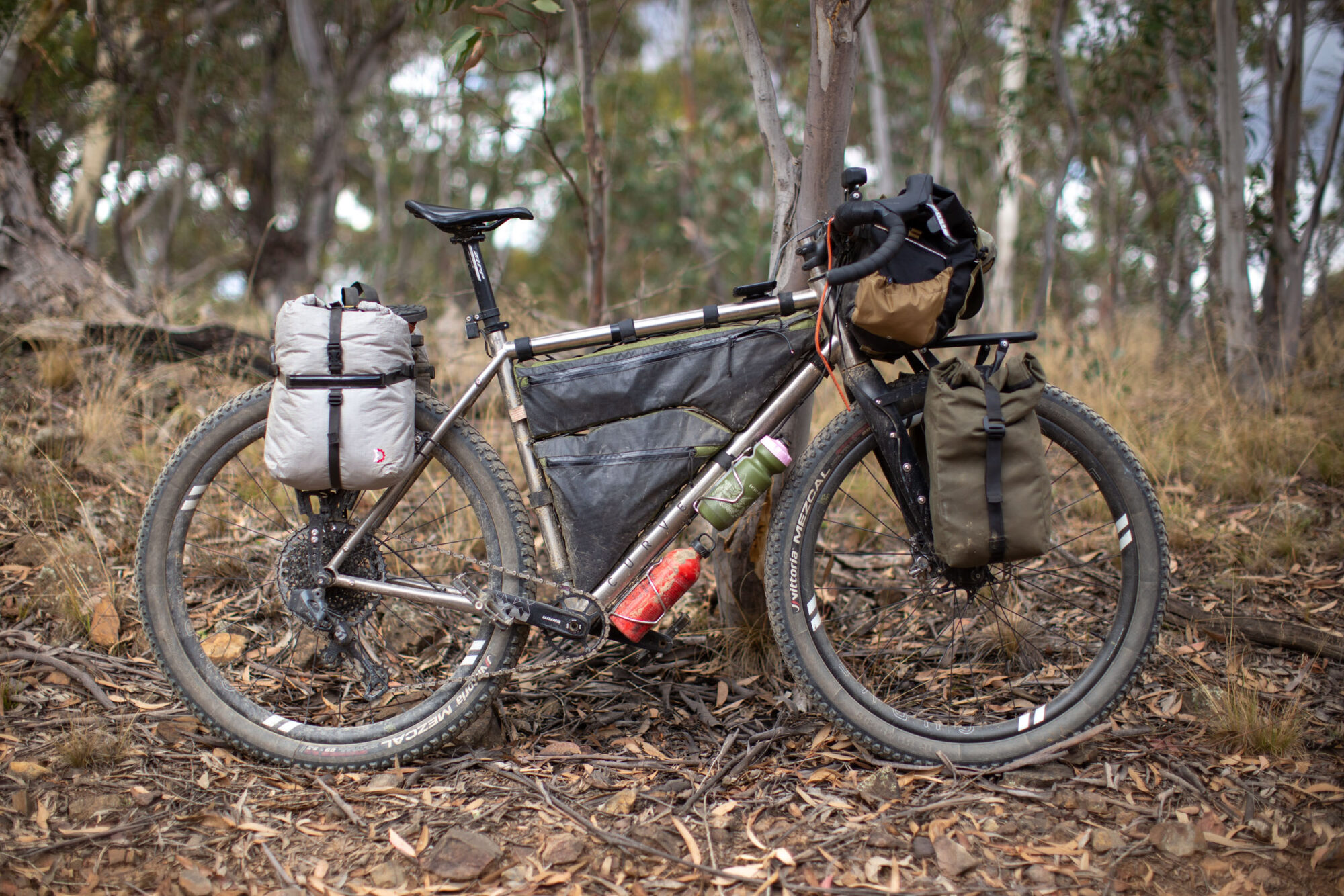
Miles’ Curve GMX+ Ti AXS Build Kit
- Frame: Curve GMX+ Ti, XM
- Fork: Curve 430 Seek, Carbon
- Bottom Bracket: T47 DUB
- Headset: Curve 44/56 mm zero-stack
- Cranks: SRAM NX Eagle, 34T
- Cassette: SRAM Eagle, 52-10T
- Rear Derailleur: SRAM AXS
- Front Hub: SP Dynamo, Boost
- Rear Hub: DT Swiss 350, Boost
- Rims: Curve Dirt Hoops, Carbon
- Tires: Vittoria Mezcal 29×2.6″
- Handlebar: Curve Walmer 50cm
- Handlebar Tape: Curve
- Stem: Thomson X4 50mm stem (swapped for more rise)
- Seatpost: Zipp Service Course alloy
- Saddle: Specialized Power Saddle, with Mimic 155mm
- Pedals: Tectonic Altar Pedals
- Dynamo Setup: kLite Dynamo setup with Cube flasher, Bikepacker MTB Light, and USB charger
- Front Rack: Old Man Mountain Elkhorn
- Rear Rack: Old Man Mountain Divide

Emily’s Curve GMX+ Ti SRAM Apex Build Kit
- Frame: Curve GMX+ Ti, XM
- Fork: Curve 430 Seek, Carbon
- Bottom Bracket: T47 DUB
- Headset: Curve 44/56 mm zero-stack
- Cranks: SRAM GX Eagle, 34T
- Cassette: SRAM Eagle, 50-10T
- Rear Derailleur: SRAM Apex with Garbaruk Cage
- Front Hub: SP Dynamo, Boost
- Rear Hub: DT Swiss 350, Boost
- Rims: Curve Dirt Hoops, Carbon
- Tires: Vittoria Mezcal 29×2.6″
- Handlebar: Curve Walmer 50cm
- Handlebar Tape: Curve
- Stem: Alloy
- Seatpost: Curve Titanium
- Saddle: TBD
- Pedals: PNW Loam Alloy
- Front Rack: Jack the Rack
- Rear Rack: Old Man Mountain Divide
Race, Ride, Seek
After spending hundreds of hours riding the GMX+ and digging into the numbers, I’ve confirmed my suspicions that it fits into a very small niche category of big-tired gravel bikes that can be set up with either drop bars and flat bars. It’s not like many other drop-bar mountain bikes, and it’s nothing like a gravel bike. Its length and lower stack height are what allow it to seamlessly swap between flat bars, drop bars, and even riser bars, and what set it apart from other bikes. If I had more time, I think I would have really enjoyed testing the GMX+ in flat-bar mode. It’s a unique bike, and I think once people figure out the sizing and put the time into understanding the geometry chart, we’ll see a lot more of the GMX+ pop up outside of Australia.
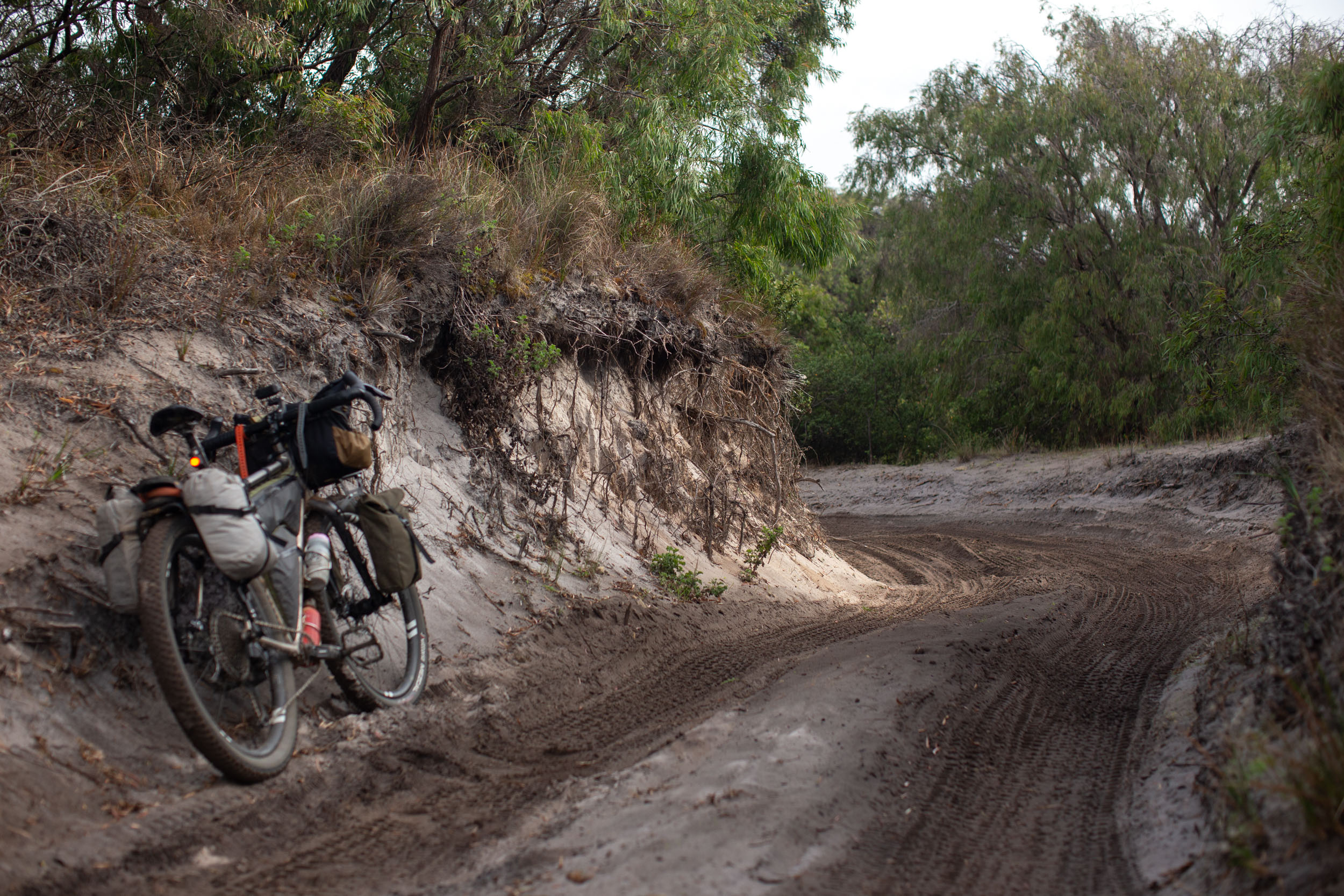
As I see it, the GMX+ can handle pretty much anything you throw at it. If you like riding big days and are normally loaded up with gear and appreciate the big main triangle and various mounting points, it could be for you. If you’re looking for a zippy gravel and agile gravel bike, rowdy mountain bike, or upright touring rig, it falls somewhere in between all three.
If I’ve properly painted the picture, by now you should see the similarities between Australia’s overlanding scene and the Curve GMX+ Ti. Capabilities aside, the GMX+ has that utilitarian aesthetic that really pairs nicely with sturdy racks, waxed canvas mini panniers, and massive frame bags. All of its features mean everything can have its place, you can ride for days without resupply, and it’s packed with clever little details that set it apart from all bikes, not just big-tired gravel bikes. I also respect Curve adding a more affordable steel GMX+ to their lineup, saving riders around $1,000 without sacrificing any features that make it so appealing as a long-distance bikepacking bike.
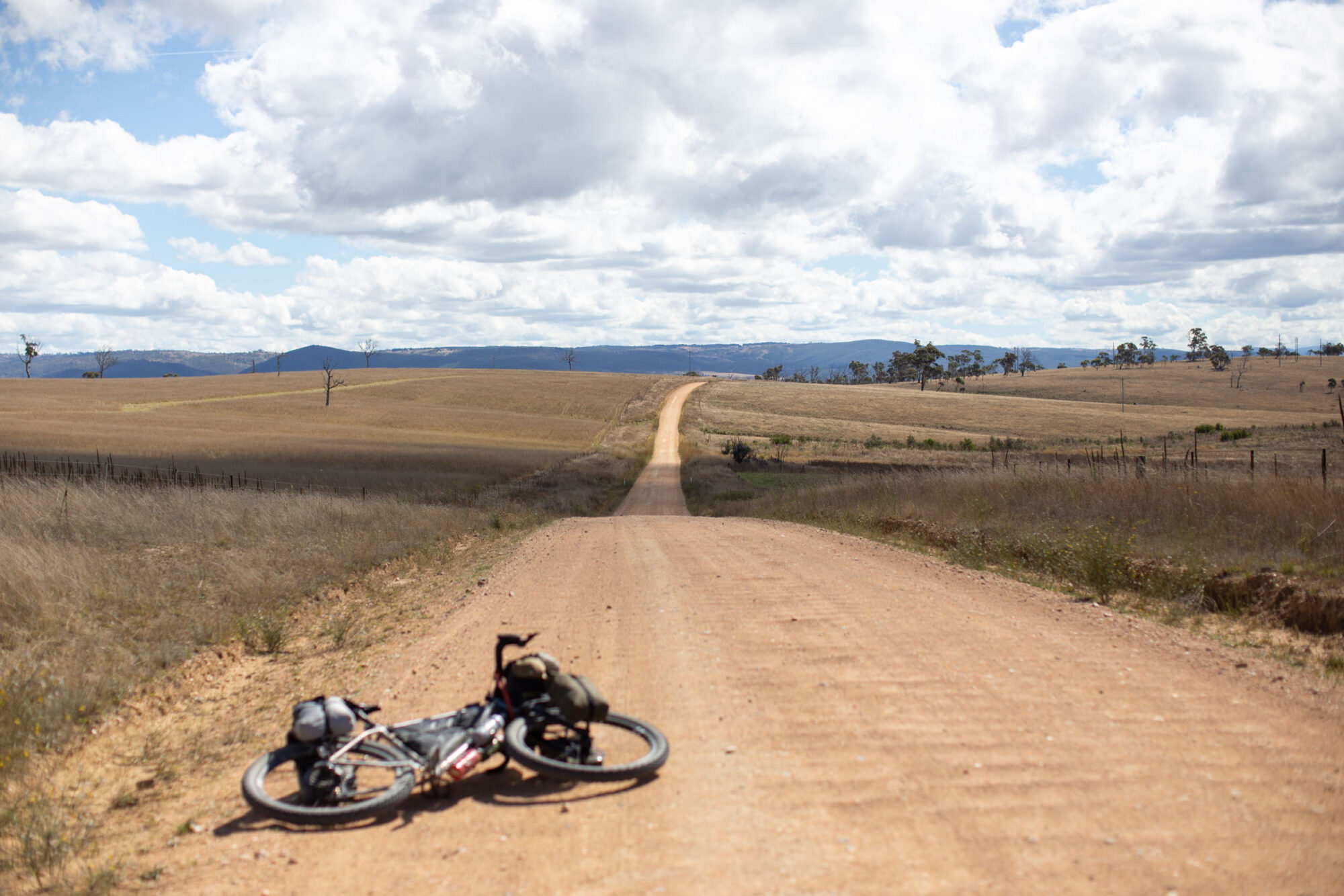
Pros
- All of the mounts, including unique dual-offset bottle mounts on the downtube, across all sizes
- Massive main triangle due to higher standover leaves plenty of room for water or a frame bag
- Long wheelbase and plenty of tire clearance make for a super stable and comfortable ride quality, day after day
- Long reach and low stack allow for easier swaps between handlebar types
- Titanium tubing is lightweight and comfortable, but the more affordable steel GMX+ is also a good option
- Great build quality, clean welds, and lots of nice details
Cons
- Long reach, low stack, and high standover might create some confusion when picking your size
- Not particularly upright, which may not work for all riders
- High standover isn’t ideal for technical terrain
- Limited dealers outside of Australia, but more are coming, and Curve ships internationally
- Pricey for a China-made titanium frame/fork, but possibly unique enough to justify it
- Model Tested: Curve GMX+ Titanium
- Actual Weight: 23 pounds (10.5kg) complete extra-medium / 7 pounds (3.1kg) frameset
- Place of Manufacture: China
- Frameset Price: $4,478 AUD (~$3,100 USD)
- Manufacturer’s Details: CurveCycling.com.au
Wrap Up
I was nervous heading into our Australia trip. A few months before flying out, I fell awkwardly on my bike and ended up fracturing the scaphoid in my right hand, keeping me off the bike for around eight weeks while it healed. Not only did this postpone our trip, pushing us deeper into Australia’s fall, but I felt far from ready for a 2,000-kilometer bikepacking trip. Emily, on the other hand, was riding almost every day, mountain biking a lot, and progressing her technical riding skills faster than I ever have. On top of all of this, I’ve been struggling with persistent lower back pain that had me wincing at the idea of a gravel bike with a super long reach. Poor me, right?
It turned out that the GMX+ Ti was the perfect tool for the job. During our six-week trip, we rode on sandy tracks beside the ocean, tackled steep and chunky fire roads, and zipped through a surprising amount of singletrack on the Munda Biddi Trail in Western Australia. The variation in the terrain we encountered would make it challenging to pick the ideal bike, but the GMX+ moved efficiently through all of it without hesitation.
On paper, the relatively short stack height and long reach of the GMX+ wouldn’t normally be what I’d look for during a trip with so many unknowns, but it ended up working nicely for both Emily and me. Add in some wide handlebars, a short stem, a selection of bags and racks, and you’ve got yourself a super-capable long-distance overlanding rig that’s perfect for the ever-changing landscapes of Australia and beyond.
What was initially confusing about the GMX+, mainly its unique geometry and silhouette, ended up being the root of its greatest strengths. It’s a long bike with huge tire clearance, making for a stable and predictable ride that’s just as suited for multi-week expeditions as it is for racing events like Race to the Rock. I think the Curve GMX+, whether it be titanium or steel, is a great option for folks who regularly head out on rides clouded in uncertainty. After all, that’s what overlanding is all about.

Related Content
Make sure to dig into these related articles for more info...
Please keep the conversation civil, constructive, and inclusive, or your comment will be removed.







